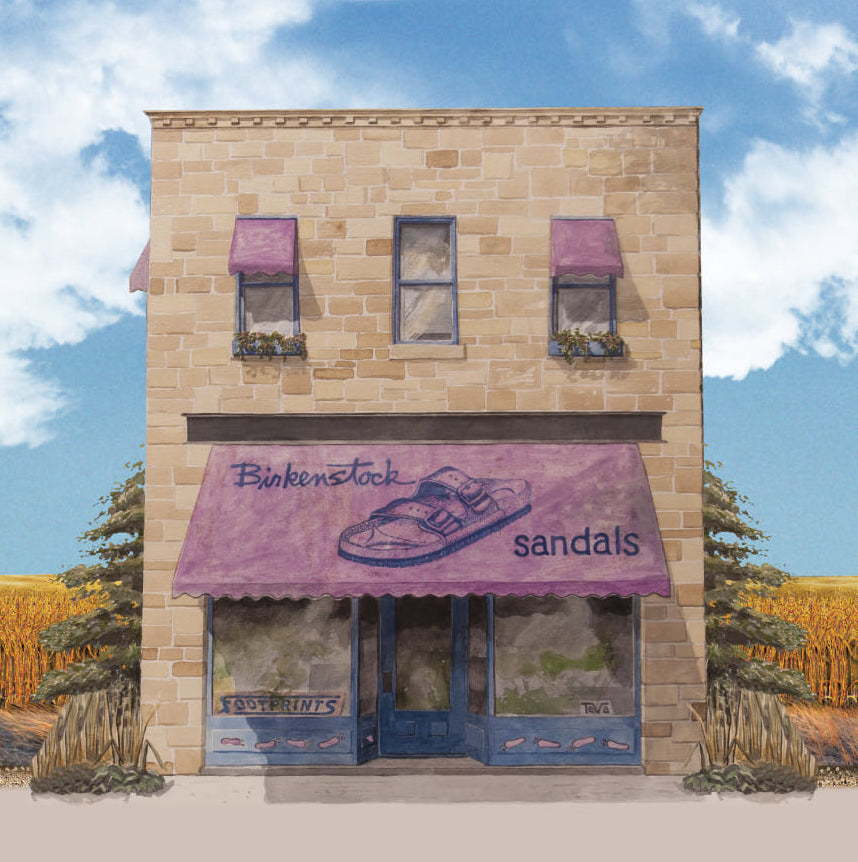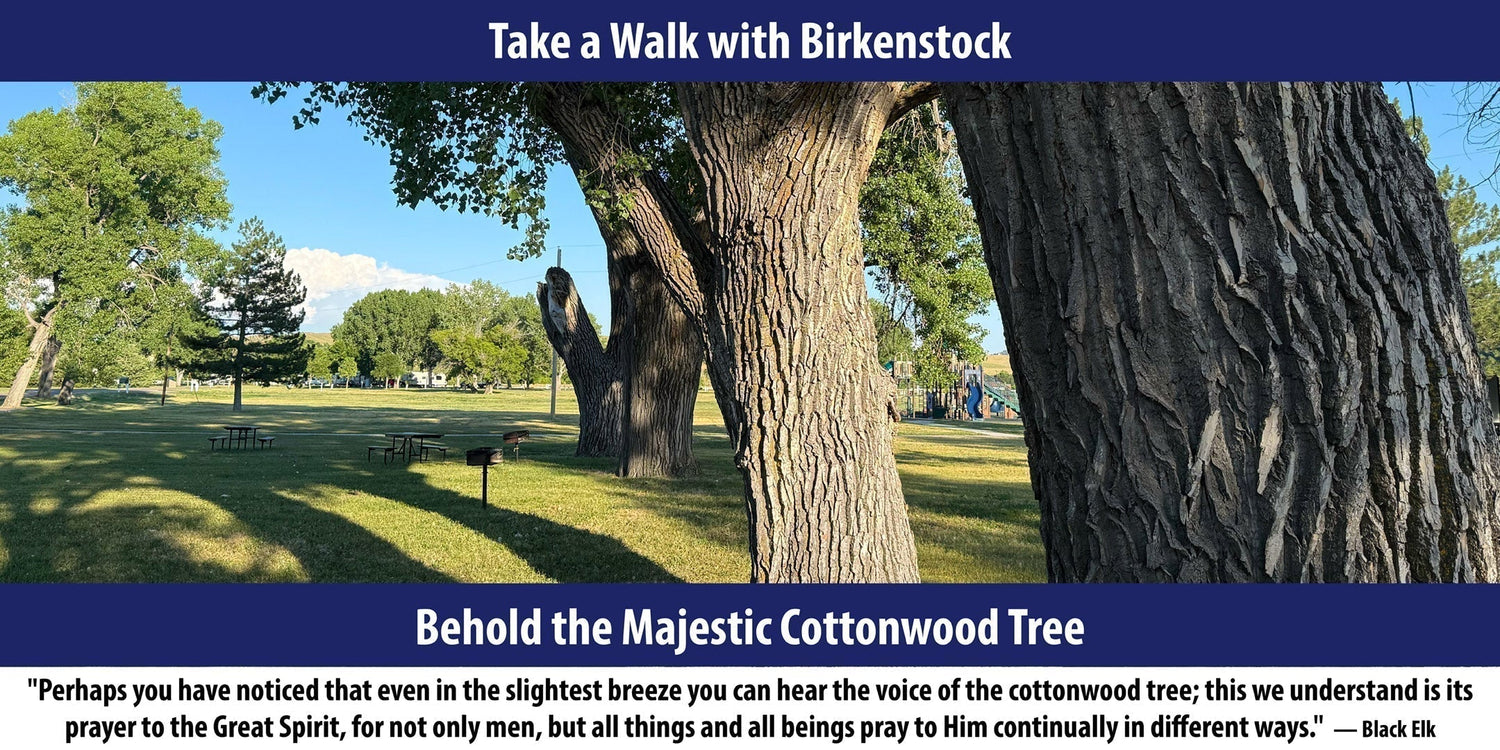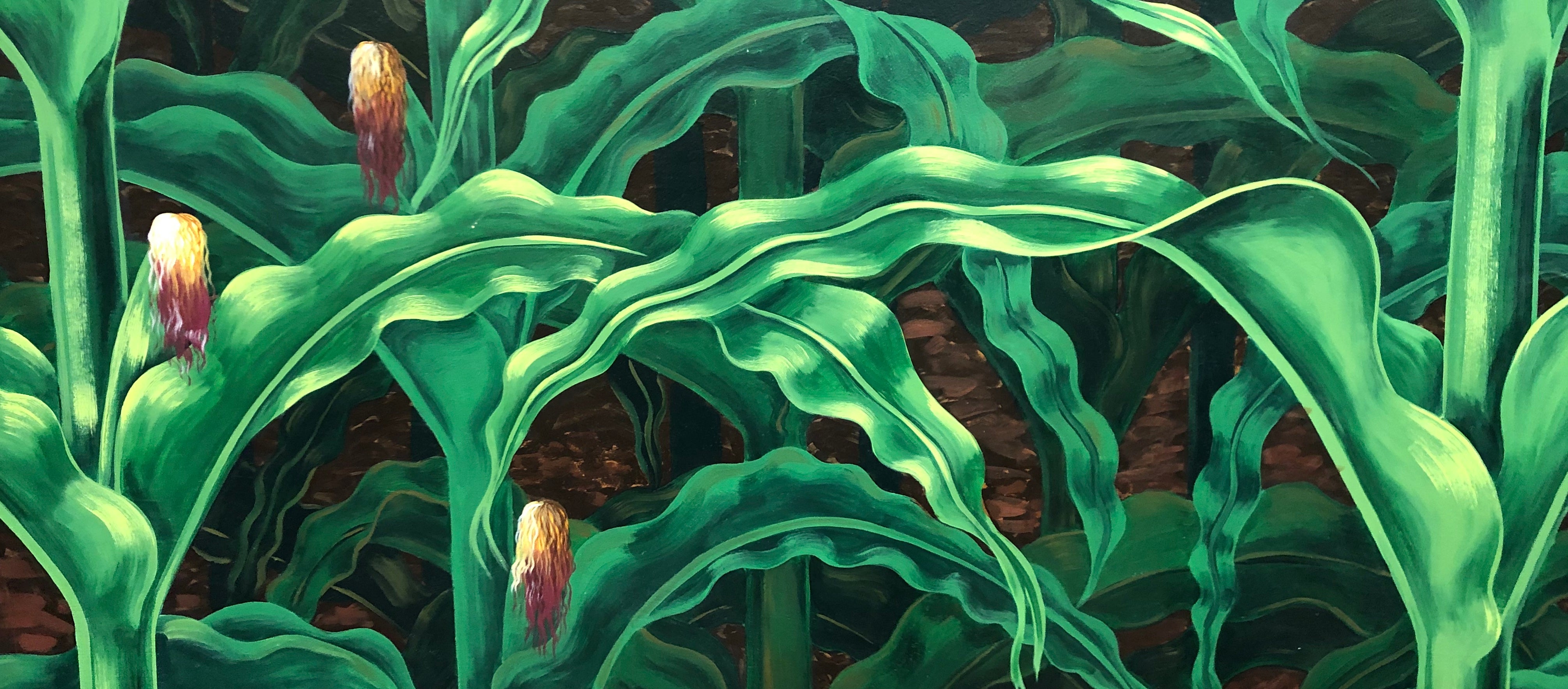California has the giant redwood trees. India has the Great Banyan Tree. Africa has the baobab tree. New Zealand has the Tāne Mahuta, the giant kauri tree. Not to be outdone, the Great Plains has the majestic cottonwood tree. Our National Champion Cottonwood Tree is located in Central Nebraska. The tree is 85 feet tall, a canopy spread of 120 feet, a trunk measuring 37.2 feet in circumference. The tree is around 120 years old. Cottonwoods are dioecious, meaning that each tree is either a male or a female. The female flowers, called catkins, mature into seed pods which burst and spread tiny cottonwood seeds attached to little strands of cotton, which act like a parachute to drift in the wind to where they need to go. A female cottonwood can disperse up to 40 million seeds per season. The seeds find their way to the muddy banks of rivers and streams where conditions are perfect. They can grow up to 20 feet tall in one season under ideal conditions. Cottonwood trees generally live 70 - 100 years, but under the right conditions can live to be up to 400 years old.


The Lakota call the cottonwood tree the Tree of Life. Cottonwoods are deeply rooted in the ground. A slight wind will cause the flat leaves to clatter and quake in a musical sound. If you cleanly break a cottonwood twig, you will find a five-pointed star in the center of the twig. The stars are believed to connect with the heavens above. The cottonwood is central to the Sun Dance ceremony. The Hopis carve their spiritual Kachina dolls from the roots of the cottonwood. The bark and leaves contain salicin, a compound similar to the active ingredient of aspirin. The cottonwood was relieving sore muscles, bruises, headaches, and respiratory ailments centuries before Aspirin was invented. It was found that smoking leather with cottonwood smoke greatly increased the durability of leather.



During the Lewis and Clark Expedition, Native Americans taught the explorers important survival skills. Their footwear quickly wore out, but cottonwood-smoked leather saved the day. They utilized the bark and leaves for medicine, as well as food for horses. Ten of the Expedition's canoes were carved from cottonwood trees along the way. When Teddy Roosevelt fled New York following the death of his wife and mother within hours of each other, he headed for the Badlands of North Dakota and built his cabin of cottonwood trees. The constant quaking leaves and sound of mourning doves cooing made TR feel "gentle, hopeless, never-ending grief." However, when settlers arrived on the Great Plains, they viewed the cottonwood positively, similar to what the Native Americans expressed. The author Willa Cather described cottonwoods in Song of the Lark as "wind-loving trees... whose roots are always seeking water and whose leaves are always talking about it". Her pioneer characters were intertwined with the cottonwood trees.

Cottonwoods can also be considered a nuisance. They spew so much cotton that it clogs air conditioner condensers and litters peoples' sidewalks and driveways. But they are so majestic. Their sound is pleasing. When located in historic sites where Native people lived and roamed, where settlers made homes, and where soldiers' forts depended upon the cottonwood, a walk amongst them is compelling.

Take a walk with Birkenstock.






















